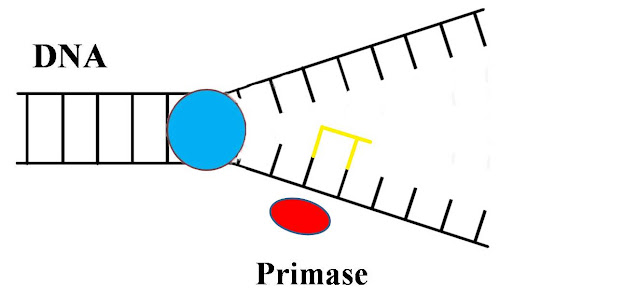How does DNA replication work during cell division?
In order for various functions to occur in our body, cell division must occur. Through this, one cell becomes multiple cells. This process is carried out by mitosis and meiosis. Mitosis is the process of cell division that occurs on somatic cells (non-sex cells); whereas meiosis is used for the cell division of gamete cells (sex cells). In both the cell division process, there is a step, in which the DNA is replicated. This DNA replication process is carried out by dozens of enzymes, to correctly copy the old DNA without any errors. Let’s look at the detailed process of DNA replication.
At first, an enzyme called helicase, separates the DNA to be replicated from its double helix shape to an individual strand. This creates a replication fork. During unwinding, strain occurs in the strand, as two strands are twisted around each other. So to avoid the strain on the DNA, an enzyme called topoisomerase cuts the DNA molecule, twists it, and again fixes it. This reduces the strain in the DNA molecule while separating. This enzyme will always be ahead of the replication fork. Once the DNA is separated, it looks like two individual separate strands.
 |
| Helicase and Topoisomerase split the DNA strands. |
So another two new separate individual strands must be combined with the old strands to form two DNA molecules. To add the strands, an enzyme called primase kick-starts the replication by adding RNA primers to the existing strand. These RNA primers are 5-10 nucleotides long. After the nucleotides have been added an enzyme called DNA polymerase III attaches to the RNA primer and adds DNA bases to the leading strand. The direction of adding bases will always be from 3’ to 5’.
 |
| Primase adds RNA Primer. |
 |
| DNA Polymerase III adds DNA bases. |
 |
Primase adds RNA Primer. |
 |
| DNA Polymerase III adds DNA bases. |
 |
DNA Polymerase I converts RNA bases to DNA bases and Ligase seals the Okazaki fragments. |
Thus by this impressive operation of these enzymes, an exact copy of DNA is produced. Each DNA consists of one old strand and one new strand. This is how DNA replication occurs. Now the cell can be divided, having its own DNA molecule inside the nucleus.
Written by [Jerine Victor]







Comments
Post a Comment